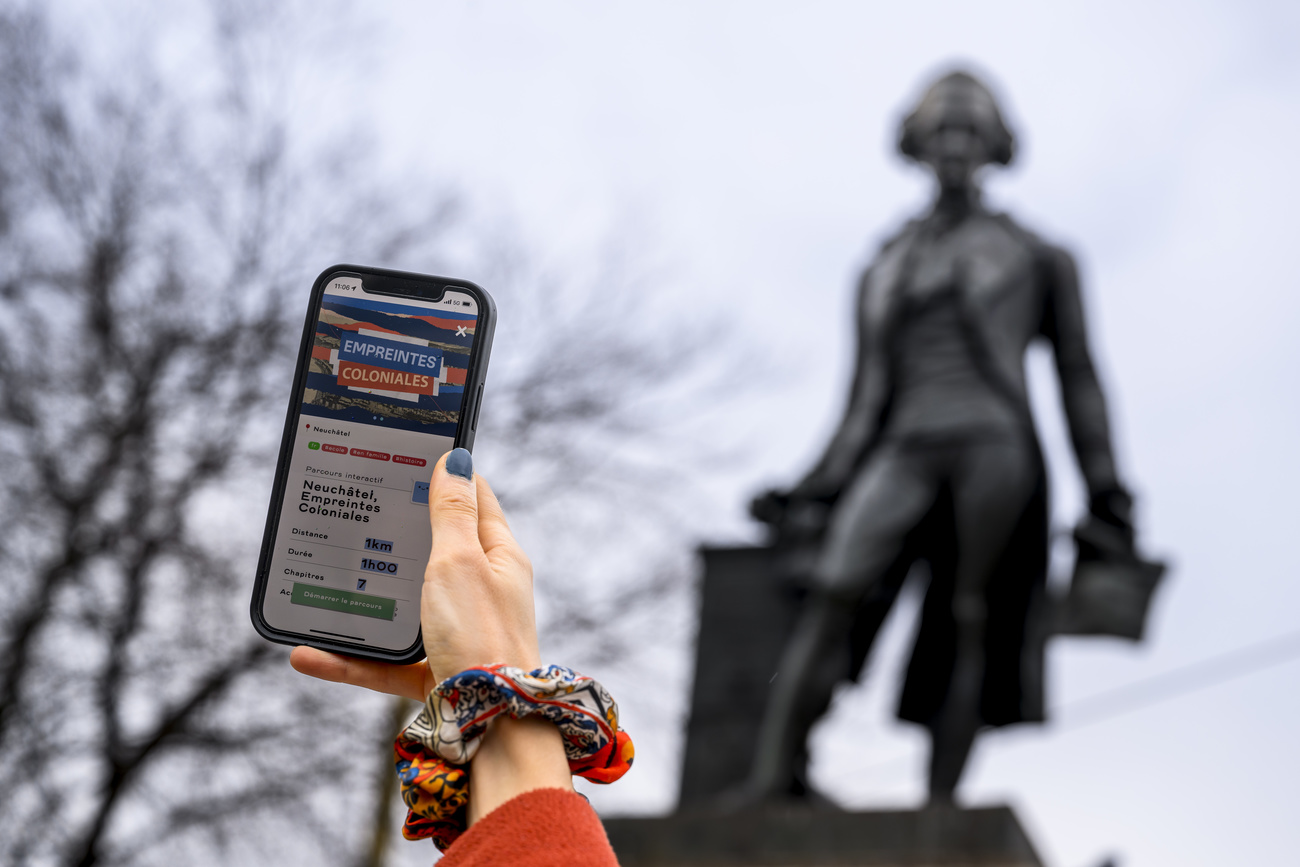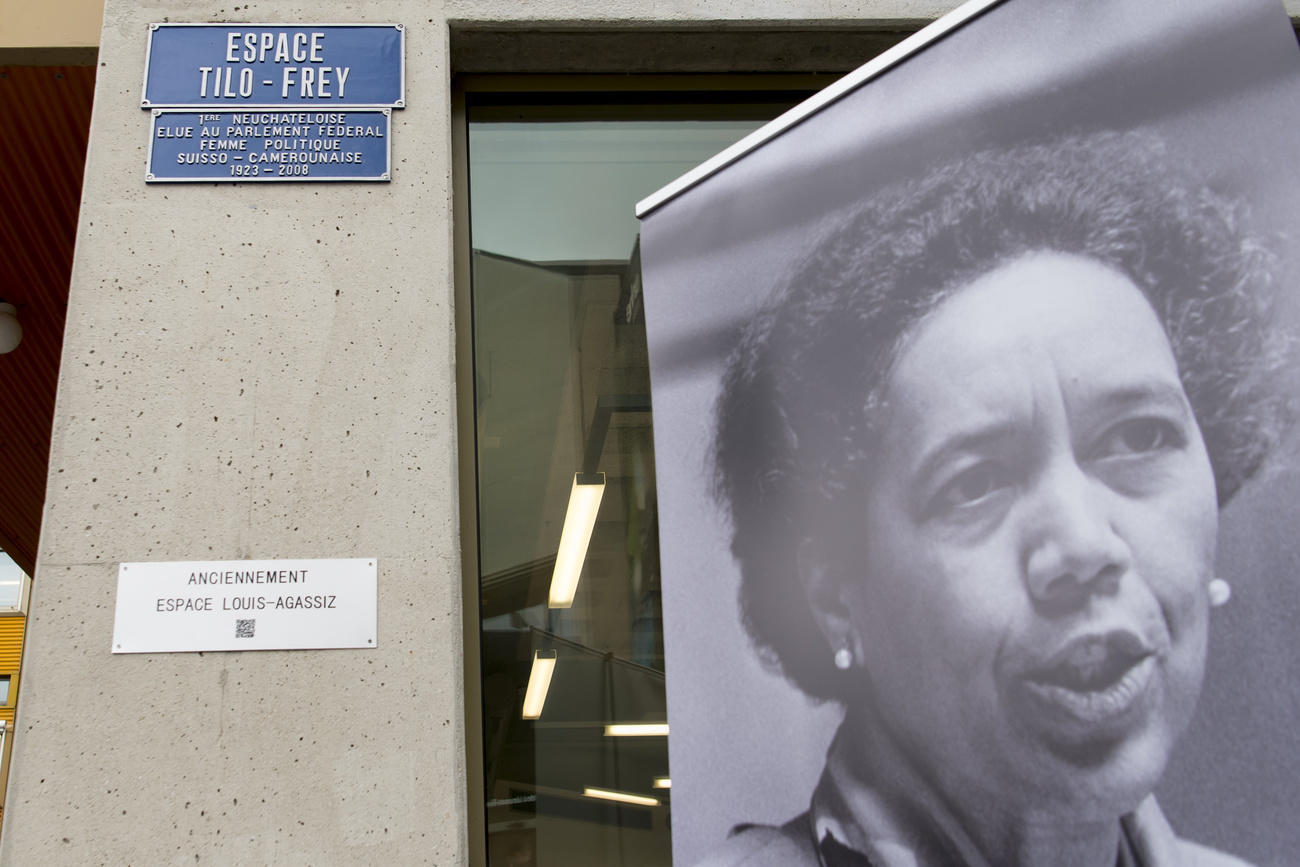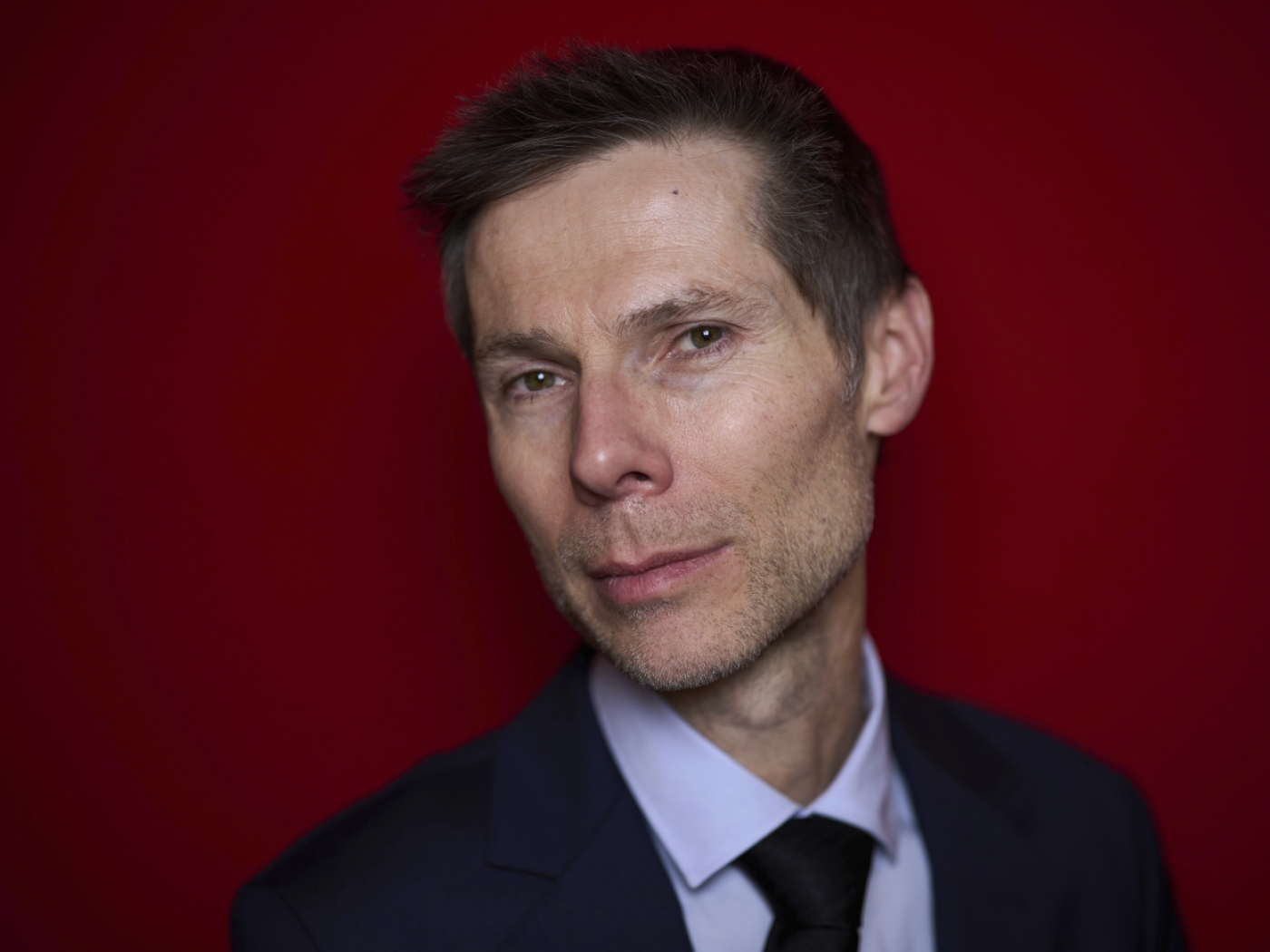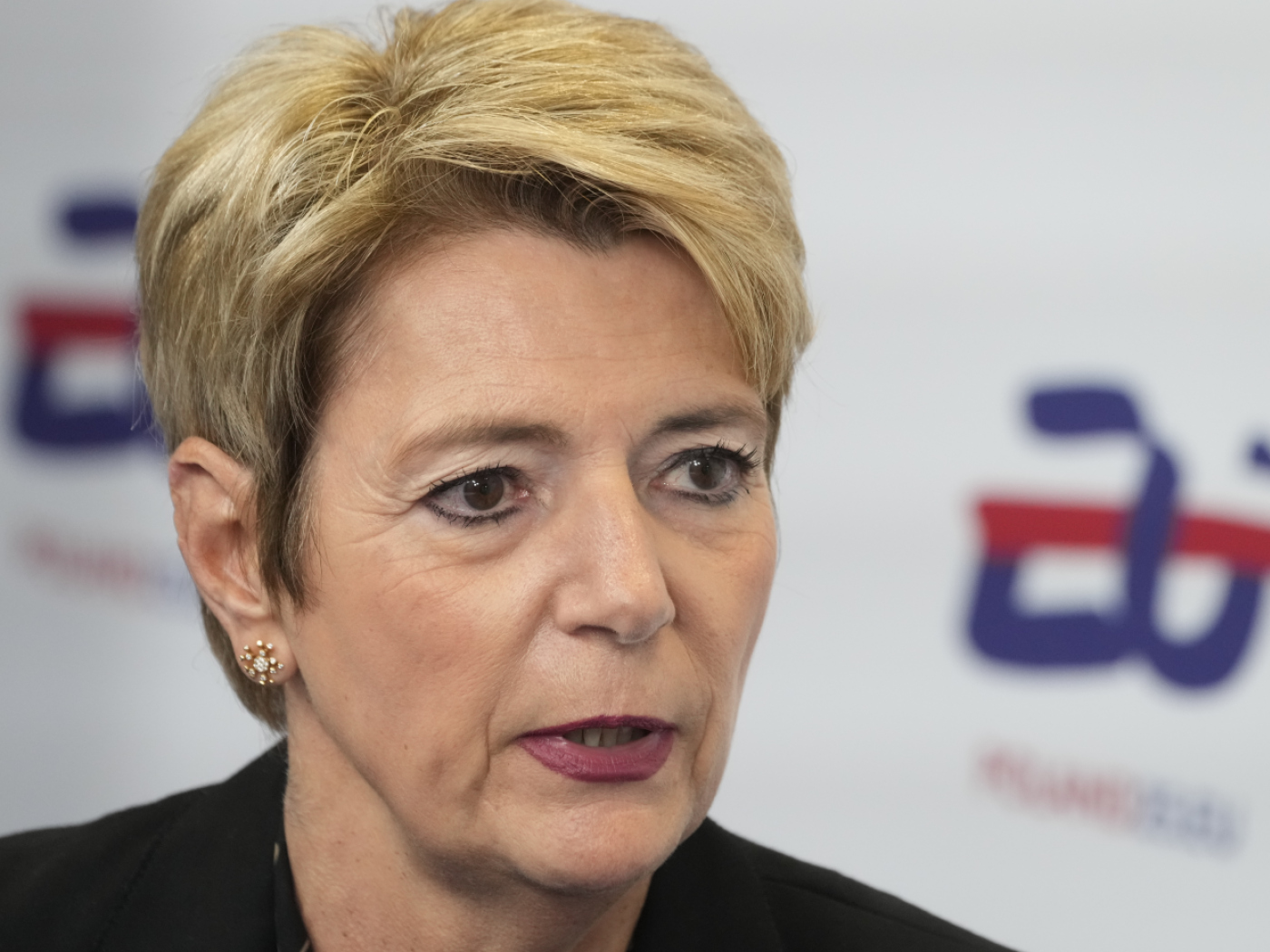
Small sculpture by David de Pury stolen in Neuchâtel
Keystone-SDA
A small protest sculpture of the controversial banker and benefactor David de Pury in Neuchâtel has been stolen.
The intentionally inverted statue stood next to the large statue of de Pury, erected in 1855, in a central square in the city centre. It was erected in 2022 as part of the reappraisal of the city’s colonial past.
+Get the most important news from Switzerland in your inbox
De Pury (1709-1786) had bequeathed a huge fortune to the city of Neuchâtel in his will. The town used the money to construct various buildings. However, the merchant made his great fortune partly through slavery.
“As with any act of vandalism against its cultural heritage, the city intends to press charges,” Neuchâtel communications officer Sophie Schneider told the Keystone-SDA news agency on Wednesday. She was confirming a report by the online portal arcinfo.ch.
More

More
Swiss cities dust off their colonial past
Last weekend, several buildings and monuments in the city had already been defaced with spray paint. On the outside walls of the collegiate church, for example, unknown perpetrators painted several anti-clerical slogans.
“This act is all the more regrettable as this work is the result of a reappraisal of our city’s colonial past and a process of social cohesion and reconciliation,” added Schneider.
The bronze sculpture by Geneva artist Mathias Pfund on a concrete plinth, installed in 2022, showed de Pury upside down with his head stuck in the plinth. The style is similar to the accidentally inverted statue of the equally controversial Neuchâtel scientist Louis Agassiz (1807-1873) at Stanford University in California. It landed upside down after an earthquake at the beginning of the 20th century. This Agassiz statue was removed in 2020.
More

More
Should urban planning be politically correct?
Adapted from French by DeepL/ac
We select the most relevant news for an international audience and use automatic translation tools to translate them into English. A journalist then reviews the translation for clarity and accuracy before publication.
Providing you with automatically translated news gives us the time to write more in-depth articles. The news stories we select have been written and carefully fact-checked by an external editorial team from news agencies such as Bloomberg or Keystone.
If you have any questions about how we work, write to us at english@swissinfo.ch.













